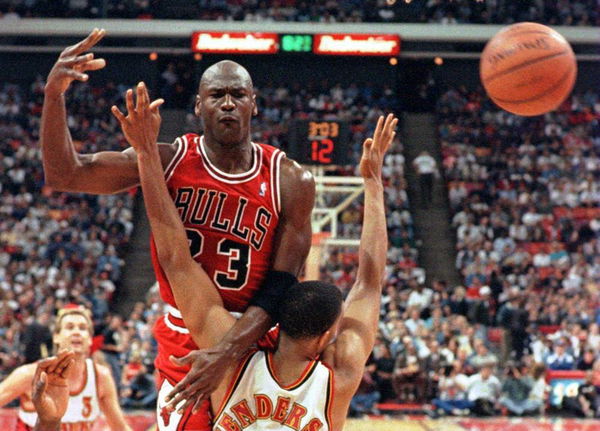
Imago
via Imago

Imago
via Imago
Injuries are reshaping the NBA before the season can settle. Tyrese Haliburton is out for the year with a torn Achilles, and stars like Jayson Tatum and Damian Lillard face the same fate. Even LeBron James missed his first 14 games ever, underscoring how fast the injury list is growing. With concerns rising, Lakers legend Byron Scott is stepping in to address the issue.
Watch What’s Trending Now!
In an exclusive chat with EssentiallySports’ Tim Wood, Byron Scott weighed in on load management.
“I think one of the main reasons a lot of these guys are getting hurt nowadays, more than back in our day, is because they’re playing basketball 24/7, 365. You have to give your body a break,” Scott said.
ADVERTISEMENT
We have seen this many times. Last season, Tyrese Haliburton pushed himself to his limits in the playoffs because the team was chasing a once-in-a-lifetime moment, only to fall in the first quarter of Game 7 of the 2024-25 NBA Finals. The same Indiana Pacers have lost 15 of their first 17 games this season, citing a long list of injuries. But this wasn’t the case a few decades back.

Imago
Jun 22, 2025; Oklahoma City, Oklahoma, USA; Indiana Pacers guard Tyrese Haliburton (0) reacts after suffering an injury during the first quarter against the Oklahoma City Thunder during game seven of the 2025 NBA Finals at Paycom Center. Mandatory Credit: Kyle Terada-Imagn Images
“You can’t—season’s over; two weeks later, you’re playing in the Olympics, or you’re playing here, or you’re playing there, and then you come back. It’s too much basketball. Sometimes you just got to take time off. When we played, if we lost in the finals, we took two weeks off. We got back to work. If we won, we took two weeks off. We got back to work. But it wasn’t always on the court,” Scott said in the same interview.
ADVERTISEMENT
And it’s showing on the court. By last Friday, 21 of the NBA’s 45 biggest stars were already out, their bodies waving the white flag. These are the guys who’ve made All-Star or All-NBA teams in the last three seasons, and between them, they’ve already missed over 200 games, double the total at this point just two years ago, according to Yahoo Sports’ Tom Haberstroh. One major culprit?
NBA teams are averaging 100.4 possessions per 48 minutes this season. That can’t be ordinary when it is the fastest pace tracked since the 1980s. Players are sprinting at 4.43 mph on average, covering 34.2 miles per game between both teams, and thanks to the jam-packed NBA Cup schedule, there’s barely any time to catch a breath. Worse, they aren’t limited to one city but travel.
ADVERTISEMENT
The Golden State Warriors, one of the decorated teams in the NBA over the last decade, have been a victim of this. With a 10-9 win record this season, they are struggling to keep their lineup fresh, and head coach Steve Kerr is vocal about this. But Scott isn’t convinced it’s all about the pace.
“These guys are complaining about the pace and everything, but again, training camp is shorter than it used to be. Preseason games are shorter than they used to be. So, they’re getting all these benefits, but I still think you got to stop playing the game and give your body a chance to rest and recover a lot longer than they do right now,” the three-time NBA Champion said.
On paper, load management appears to be a smart approach. Rest a star, avoid injury, win more games. But the NBA’s own 10-year study from 2013-14 through 2022-23 says otherwise.
ADVERTISEMENT
They examined 150 top players each season, tracking game frequency, tight schedules, and total minutes, and found no link between skipping games and fewer injuries. Even stretches of jam-packed schedules didn’t spike injury rates. Perhaps that’s why Michael Jordan always treated missing a game like a sin.
Michael Jordan says no to load management
For a six-time NBA champion like Michael Jordan, load management was never a thing. Speaking with Mike Tirico on NBC’s MJ: Insights to Excellence, Jordan explained that missing a game “shouldn’t be needed” because it was a lost chance to prove yourself.
ADVERTISEMENT
“I never wanted to miss a game because it was an opportunity to prove. It was something that I felt like the fans are there that watch me play. I want to impress that guy way up on top who probably worked his a– off to get a ticket or to get money to buy the ticket,” Jordan said, making it clear he played for every fan in the building, even the ones rooting against him.
To prove his point, Jordan recounted his own legendary example, the Flu Game during the 1997 NBA Finals against the Jazz.
Despite being violently ill until 90 minutes before tip-off, Jordan played without a normal warmup, scored 38 points, and led the Bulls to a crucial win, collapsing onto Scottie Pippen’s chest after the buzzer. That was the kind of mentality he expected from himself and the players today. “I was going to find a way to get out there, even if I was a decoy,” Jordan said.

Imago
Michael Jordan Chicago Bulls, li. gegen Alan Henderson Atlanta Hawks – PUBLICATIONxINxGERxSUIxAUTxHUNxONLY ATL9602220119124205 Basketball Herren NBA 1995/1996, Atlanta Hawks – Chicago Bulls 91:96 Gruppe Atlanta Dynamik, Kampf, Basketball Herren NBA 1995/1996, Atlanta Hawks – Chicago Bulls 91:96 Gruppe Atlanta Dynamik, Kampf,
If your body can handle it, there’s no excuse to sit out, at least for someone like Jordan. “Now, physically, if I can’t do it, then I can’t do. But physically if I can do it, and I just don’t feel like doing it, that’s a different lens,” Jordan said.
Back in his time, load management was still a relatively new concept, and players were expected to grind through all 82 games if they were healthy. Over his 15-year Hall of Fame career, Jordan dropped below 80 games only four times. That’s alien stuff, but these days, things are different.
Load management has become a science, a strategy, and, for some, a necessity. The NBA even had to step in with rules: in 2023, teams can be fined for sitting stars, starting at $100,000 and skyrocketing to $1 million for repeated violations, all to protect the “integrity of the game.”
But it’s not just players deciding to skip games. As Stephen Curry explained, “It’s usually not the player that is going to the training staff and saying, ‘Hey, I don’t have it tonight.’ It’s usually the other way around. There’s a lot of science involved.” So it’s for the players, but the players don’t get a say.
ADVERTISEMENT
ADVERTISEMENT
ADVERTISEMENT

